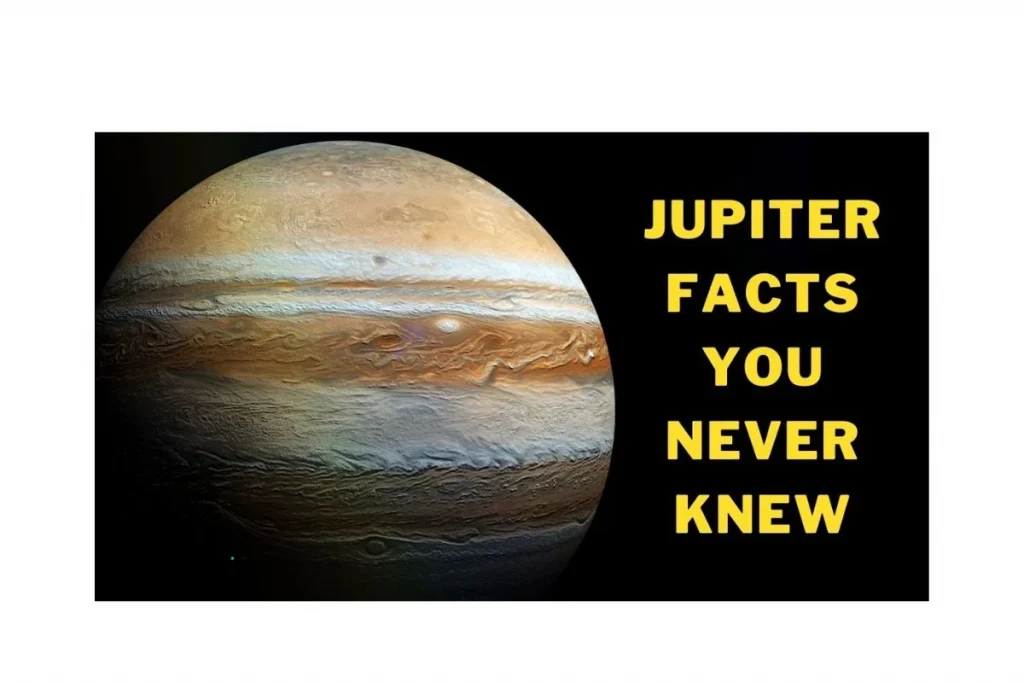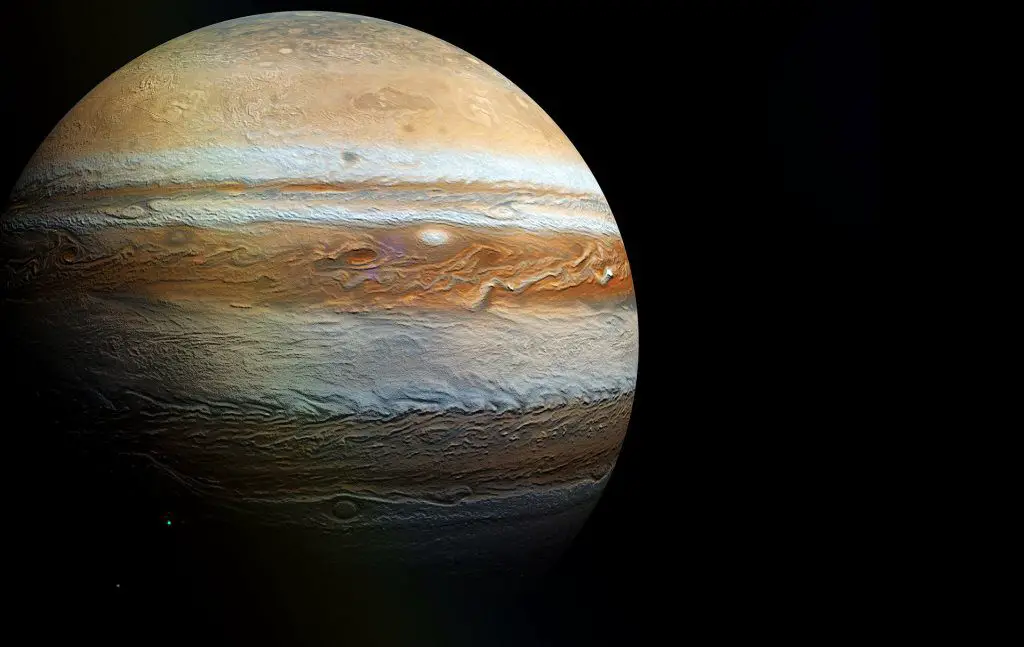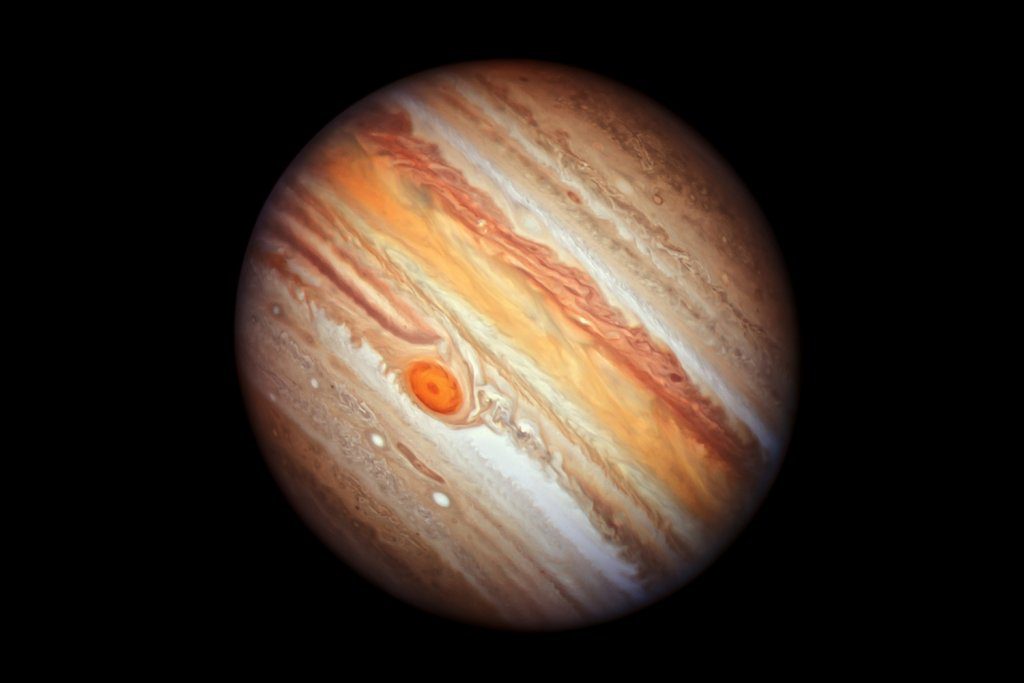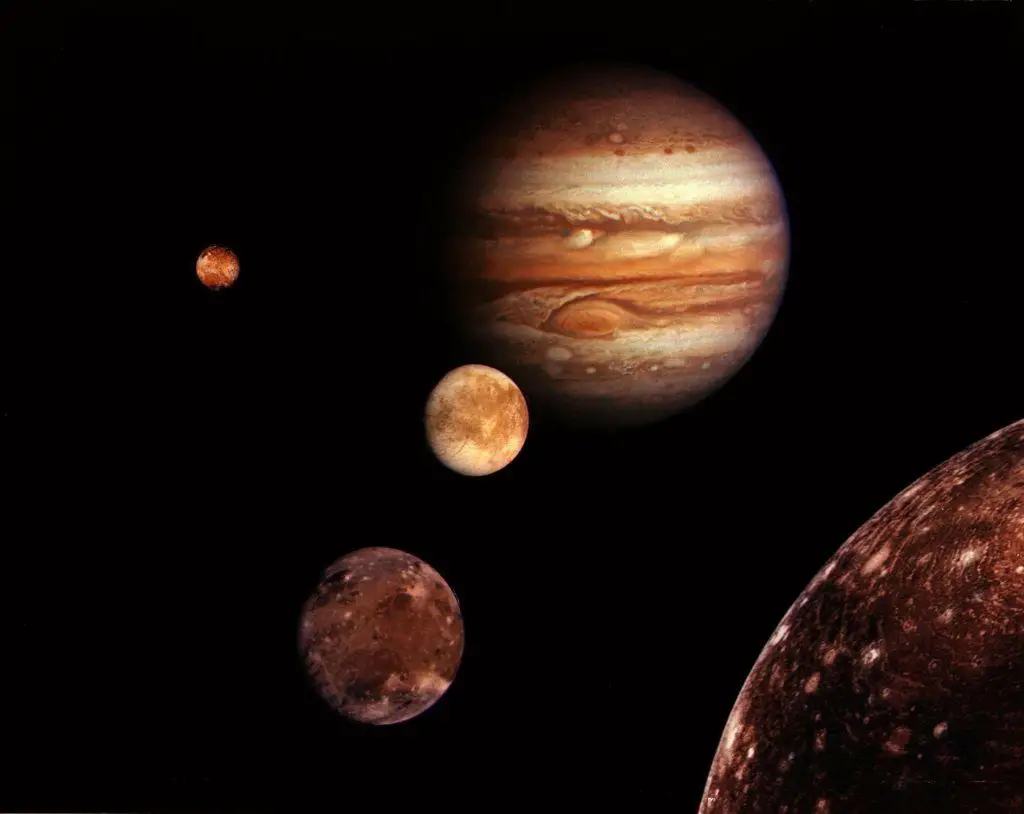
Rightly named after the king of gods, the fifth in line from the Sun, Jupiter is the largest planet in the solar system. Its size is twice of all the planets combined. It is a well-known Jupiter fact that it has a powerful magnetic field and has the most moons than any planet present in the solar system. We are sure you have seen the beautiful stripes and swirls around this gas giant. But did you know these are actually clouds of water and ammonia?
Jupiter has always been a source of curiosity for astronomers since ancient times but with the advent of technology & modern astronomy and the invention of the telescope, more information on this giant planet is coming to light. Currently, NASA’s Juno orbiter is exploring the largest planet of the solar system and sending atmospheric data, observations, and some amazing photos of Jupiter. Curious to know some more amazing Jupiter facts, stick to the end of the article then as we share some interesting facts about Jupiter

Jupiter is a failed star
Considering the most interesting Jupiter facts, did you know that astronomers believe that Jupiter cannot be a star?
We know that fusion reactions occurring at the core of the stars are their source of generating energy. Jupiter has a lot of hydrogen and helium, yet it does not have enough mass to trigger those reactions. Jupiter will be needing 70 times its current mass to produce the required heat and pressure that can cause the fusion of the hydrogen atoms and generate heat and light in the process.
The massive size of Jupiter
By far, Jupiter is the most massive cosmic body in the solar system. Jupiter is the largest planet in the solar system and surprisingly, the mass of Jupiter is 318 times more than the mass of the Earth. It is 2.5 times bigger than all the planets combined in the solar system.
Let us share an interesting Jupiter fact here: if Jupiter increase in size, it would actually get smaller. Astronomers say that as a planet becomes dense, it starts pulling on itself. This will cause Jupiter to remain the same size even when it has increased four times the current mass.
The Great Red Spot of Jupiter
The Great Red Spot observed on Jupiter has always been a subject of debate among astronomers. The famed astronomer from Italy, Giovanni Cassini, was the first to observe a huge blemish south of the equator of Jupiter. After several speculations, in 1979, after the flyby completion of the Voyager 1 mission, NASA scientists could observe that the Spot is a storm that can fit 2- 3 planets in it.
Jupiter’s turbulent and fast-moving atmosphere fuels the Great Red Spot which according to NASA is “an extremely persistent anticyclonic storm”. The Spot is a source of curiosity for astronomers. It spins anti-clockwise and for once complete rotation, it takes six Earth days.
Astronomers assume that red organic compounds impart the red color to the Spot. Cassini observed that the Spot was 40,000 km in diameter but now it is half of that size; astronomers believe that the Spot will soon disappear in the coming centuries. Astronomers have, however, suggested that there may be another Red Spot on Jupiter in some other location.

Fastest spinning planet
With a rotational velocity of 12.6km/s, Jupiter is one of the fastest spinning planets in the solar system. It takes only 10 hours to complete one rotation on its axis. The rapid rotation of Jupiter generates the powerful magnetic fields of the planet and also the dangerous radiation that surrounds it.
Did you know that the spinning speed of Jupiter is responsible for flattening the poles and divergence of the planet at the Equator? The equator is 4600 kilometers away from the center.
The magnetic field of Jupiter
Combining the spinning prowess of Jupiter, the core of Jupiter has active, swirling molten materials that upon motion produce strong magnetic fields. The magnetic field has particles of sulfur dioxide and hydrogen ions.
According to NASA, Jupiter has one of the strongest magnetic fields in the solar system. The magnetic field of Jupiter is ten times stronger than that of Earth. The interaction of the magnetosphere with solar winds generates radiation which is dangerous for the revolving spacecraft.
The ring system of Jupiter
Saturn may have the more iconic ring system around it, but Jupiter’s ring system can provide good competition as well. The rings surrounding Jupiter are faint and are made of dust. Astronomers did not notice the ring system but to everyone’s surprise, Voyager 1 actually provided images of the rings in 1979. They are between 2500- and 12,499 kilometers thick.
Jupiter’s moons
Jupiter was considered to have the most natural satellites in the solar system. However, in 2019, astronomers discovered Saturn has 82, beating the 79 moons of Jupiter. Astronomers believe there are 200 natural satellites orbiting Jupiter, though it is possible for Jupiter to regain the title back.
Jupiter’s moons are less than 10 kilometers in diameter but there are four moons that stand out. These are lo, Callisto, Ganymede, and Europa. Ganymede is the largest moon in the solar system with a diameter of 5,262 kilometers.

Clouds on Jupiter
The beautiful storms and clouds observed on Jupiter are 50 kilometers thick. The clouds are made of ammonium crystals which break down into different cloud decks. The darker clouds are made of compounds from the inner depths of Jupiter. These clouds change color in the presence of sunlight. Helium and hydrogen are present in the lower strata.
Visited by Spacecraft
Did you know Jupiter has been visited by 7 spacecraft? It was first visited by NASA in December 1973 by Pioneer 10. Then came Pioneer 11 in December 1974 and after that Voyager 1 and 2 flybys in 1979. Ulysses arrived next after a long break in February 1992. It was then followed by the Galileo space probe, Cassini flyby, and NASA’s New Horizons.
Jupiter’s auroras
Jupiter experiences intense auroras in the solar system. Auroras are phenomena that are caused due to the collision of atoms with energetic charged particles. The main cause of Jupiter’s auroras is the activity of the sun and the many large volcanoes which provide charged particles to space.
Now there you go! A quick Jupiter fact before ending the article, did you know that being close to the Kuiper belt, Jupiter protects the solar system from hazardous asteroids?
For more content on astronomy, check out our Website & Youtube channel.





